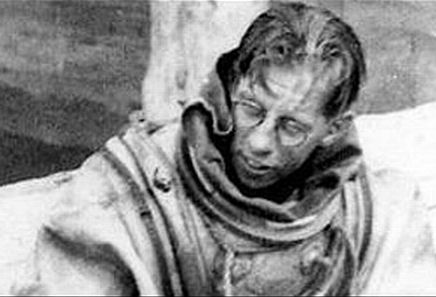- Joined
- Nov 5, 2009
- Messages
- 22,714
- Reaction score
- 6,196
- Age
- 46
- Location
- Scotland
- Website
- www.youtube.com
Although World War II has been over for nearly fifty years, it still has enormous potential to cause human suffering and death. Not all of the ammunition used during the war has been accounted for. Although most of it blew up as expected, some rounds were duds, while some were just misplaced, either through neglect or because enemy action buried it. So there's a lot of old ammunition lying around. And sometimes it kills.

In the early 1990s an estimated 1,500 tons of unexploded ammunition left over from World War II were discovered annually on the territory of what was until recently West Germany. Nor is the problem confined to Germany alone, as ammunition regularly turns up in most other areas where there was heavy fighting.
Depending upon the environment in which the ammunition is found, and the amount found, it can be disposed of by detonation. But this is not always possible,
because old ammunition keeps turning up in highly sensitive places. As a result, it must be disposed of by hand. This is a risky, often deadly business.
In early 1990 Captain Anthony Crawford and Lance Corporal Keith Porter of the Royal Engineers were awarded the Queen's Gallantry Medal after working for thirty-two hours to disarm a German 500 pound bomb, left over from Hitler's blitz, that had been found when a sewer collapsed in London. This was the second time in only a few months that the QGM had been awarded for disarming World War II ammunition, Captain Christopher Goddard and Corporal Gary Fisher having received it after working for thirty-one hours to defuse a 1-ton bomb found near Tower Bridge. These men were lucky. Since the end of World War II , 608 men of the French explosive ordnance disposal service have died in the course of removing 16 million artillery shells, 490,000 aerial bombs, and 600,000 land and maritime mines, not to mention countless grenades, poison gas canisters, and other lethal ordnance left over from World War II, as well as the two previous Franco- German wars of 1870-1871 and 1914-1918.
The problem even affects the United States. The last (or, rather, the most recent) vessel sunk as a result of German U-boat operations in World War II was the 70-ton fishing trawler Shinnecock 1, off Southhampton, Long Island, New York, which was scuttled by U.S. Navy ordnance specialists on March 14, 1991, after she inadvertently hoisted aboard a 1,200-pound torpedo.
Surprisingly, there is no coordinated international effort to organize the identification and disposal of old ammunition. Nor is there any systematic collection of information regarding injuries resulting from it. Yet in just three incidents during 1984, the only year for which any information is available, eight people (all children) were killed and over thirty injured by explosives or poison gas left over from World War II.

In the early 1990s an estimated 1,500 tons of unexploded ammunition left over from World War II were discovered annually on the territory of what was until recently West Germany. Nor is the problem confined to Germany alone, as ammunition regularly turns up in most other areas where there was heavy fighting.
Depending upon the environment in which the ammunition is found, and the amount found, it can be disposed of by detonation. But this is not always possible,
because old ammunition keeps turning up in highly sensitive places. As a result, it must be disposed of by hand. This is a risky, often deadly business.
In early 1990 Captain Anthony Crawford and Lance Corporal Keith Porter of the Royal Engineers were awarded the Queen's Gallantry Medal after working for thirty-two hours to disarm a German 500 pound bomb, left over from Hitler's blitz, that had been found when a sewer collapsed in London. This was the second time in only a few months that the QGM had been awarded for disarming World War II ammunition, Captain Christopher Goddard and Corporal Gary Fisher having received it after working for thirty-one hours to defuse a 1-ton bomb found near Tower Bridge. These men were lucky. Since the end of World War II , 608 men of the French explosive ordnance disposal service have died in the course of removing 16 million artillery shells, 490,000 aerial bombs, and 600,000 land and maritime mines, not to mention countless grenades, poison gas canisters, and other lethal ordnance left over from World War II, as well as the two previous Franco- German wars of 1870-1871 and 1914-1918.
The problem even affects the United States. The last (or, rather, the most recent) vessel sunk as a result of German U-boat operations in World War II was the 70-ton fishing trawler Shinnecock 1, off Southhampton, Long Island, New York, which was scuttled by U.S. Navy ordnance specialists on March 14, 1991, after she inadvertently hoisted aboard a 1,200-pound torpedo.
Surprisingly, there is no coordinated international effort to organize the identification and disposal of old ammunition. Nor is there any systematic collection of information regarding injuries resulting from it. Yet in just three incidents during 1984, the only year for which any information is available, eight people (all children) were killed and over thirty injured by explosives or poison gas left over from World War II.






































